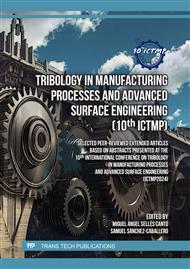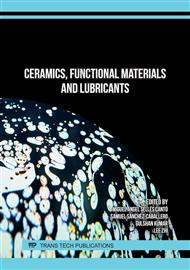p.63
p.71
p.79
p.87
p.97
p.107
p.117
p.125
p.133
Effects of Various Cooling and Lubrication Methods on the Tool Life and Hole Quality of Deep Drilled Small Holes in AISI 304L
Abstract:
This research explores the feasibility of utilising supercritical carbon dioxide (scCO₂) as a coolant coupled with minimum quantity lubrication (MQL) as a lubricant, to replace conventional coolant and lubricating fluids (CLF’s) in small diameter deep hole drilling (DHD) of austenitic stainless steel (AISI 304L). The study investigates the impact of scCO₂+MQL on hole quality, surface roughness, and tool wear parameters in comparison to high-pressure soluble oil cutting fluid (HPC). The motivation stems from the need to supply sustainable and environmentally conscious CLF alternatives within the machining industry, specifically addressing the reduction of dependence on traditional HPC’s.ScCO₂+MQL offers significant advantages under specific conditions, particularly with mid-range feed rates and higher cutting speeds. On average, drilling under scCO₂+MQL conditions achieved a success rate 71% as effective as when drilling with HPC, however the difference can be attributed to the set of cutting conditions optimised primarily for HPC, not for scCO2. The results indicate the viability of scCO₂+MQL and its ability to produce results comparable to HPC. It also emphasises the complexities of transitioning from traditional CLFs to sustainable alternatives like scCO₂+MQL in DHD processes. The outcomes present an encouraging case for the environmental and cost benefits associated with scCO₂+MQL. However, it also highlights the need for further investigation and optimisation, particularly in tool design, to enhance performance and address the existing challenges.
Info:
Periodical:
Pages:
97-105
Citation:
Online since:
March 2025
Authors:
Price:
Сopyright:
© 2025 Trans Tech Publications Ltd. All Rights Reserved
Share:
Citation:



